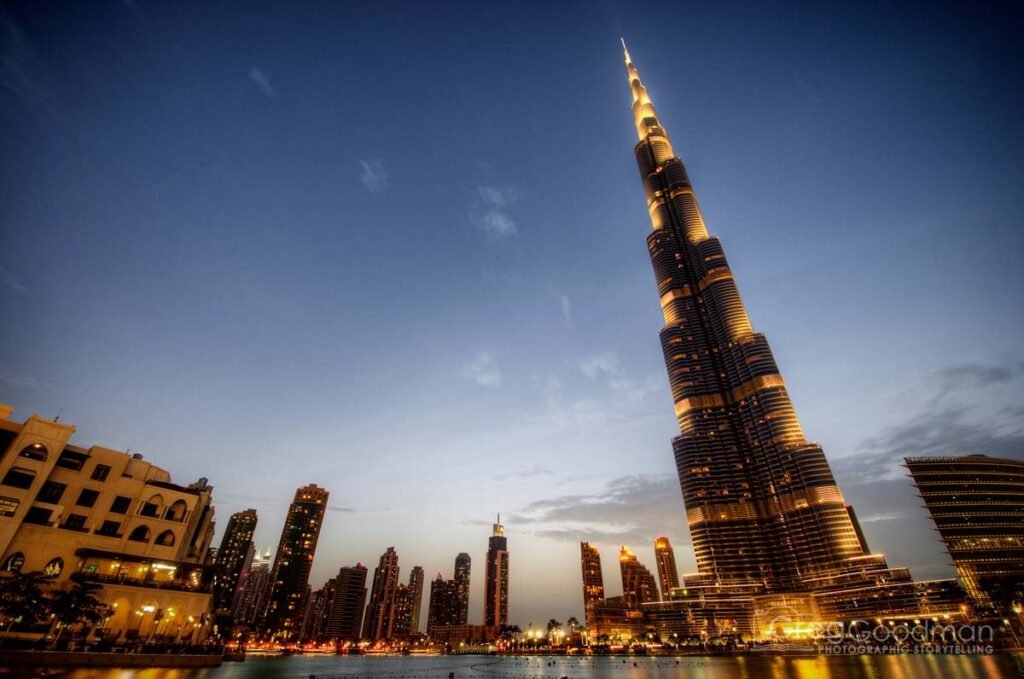The Burj Khalifa: A Symbol of Dubai’s Ambition
For over a decade, the Burj Khalifa has stood as a symbol of Dubai’s bold vision. Stretching 828 meters into the sky, it’s the tallest building in the world—and a global landmark. Tourists travel from every continent just to see it. Residents take pride in calling it a part of their skyline. But Dubai is not a city that stays still. It always dreams bigger.
So, what comes after the Burj Khalifa? What does the future of architecture in Dubai look like? The answers are already being shaped by the city’s bold new ideas, futuristic designs, and a deeper focus on sustainability.
The Rise of Green Architecture
In recent years, Dubai has been turning its focus toward sustainable buildings. After decades of building mega structures, the city is now aiming to balance size with sustainability. Future architecture in Dubai won’t just be tall—it’ll also be smart and eco-friendly.

One major trend is the use of green technology in buildings. This includes solar panels, smart cooling systems, and natural ventilation designs. The city is also promoting the use of recycled materials and rooftop gardens. These features are not just good for the planet—they also reduce the cost of energy, making buildings more affordable in the long term.
New projects such as the Dubai Urban Tech District and The Loop are set to showcase how Dubai’s next generation of buildings will live in harmony with the environment. These aren’t just structures—they’re smart ecosystems built for people and planet.
Vertical Cities: The Future is Tall, Smart, and Self-Sustained
The idea of a vertical city isn’t new, but Dubai is making it real. Developers and architects are imagining entire neighborhoods stacked high in the sky, where you can live, work, shop, and relax—all in one tall, beautifully designed space.

One exciting example is the Downtown Circle, a futuristic ring-shaped skyscraper that could wrap around the Burj Khalifa. If built, this giant ring would float above the city at 550 meters high, stretching over 3 kilometers in length. Inside, it would house parks, homes, offices, and even transportation systems.
While projects like this are still in the planning or concept phase, they show how Dubai is thinking beyond traditional skyscrapers. The goal is not just to go higher, but to create living environments that are smart, connected, and human-friendly.
AI and Smart Technology in Architecture
Dubai’s architectural future also includes deep integration of AI and technology. Buildings will no longer be just physical spaces—they will become intelligent systems that learn from how people use them.
Imagine a tower that adjusts its lighting based on the time of day, or smart windows that darken automatically to reduce heat. In some new residential developments, AI will manage everything from water usage to waste collection, all while improving comfort for residents.
The Dubai 2040 Urban Master Plan is one initiative pushing for such smart developments. It aims to create a city where technology improves daily life while respecting nature and heritage.
Designing for the Desert Climate
One of the biggest challenges in Dubai is the harsh desert environment. But rather than fighting it, architects are learning to work with it. Future buildings will be designed to cool themselves naturally, reduce glare from the sun, and allow fresh air to flow through.
Some of these designs take inspiration from traditional Emirati architecture—like wind towers that catch cool breezes—or thick walls made from natural materials to keep interiors cool. Modern architecture in Dubai is starting to mix these age-old tricks with high-tech tools to make buildings more energy-efficient.
Cultural Expression Through Architecture

While futuristic buildings are exciting, Dubai is also turning to its roots for inspiration. New projects are now blending modern design with Arab culture and Islamic art. You can see this approach in buildings like the Museum of the Future, which opened in 2022 and quickly became an icon.
Its ring-like structure, covered with Arabic calligraphy, not only stands out visually but also tells a story. It’s a perfect example of how architecture can reflect a city’s values, history, and dreams for the future.
This fusion of old and new is likely to be a key theme in the city’s future developments. Dubai wants to be modern—but also meaningful.
Beyond Skyscrapers: Communities That Feel Like Home
Another shift in Dubai’s architecture is the move toward community-focused living. The city is creating more walkable neighborhoods, mixed-use developments, and public spaces that bring people together.
Think less about isolated towers, and more about connected, people-friendly areas with parks, shops, schools, and offices within walking distance. Expo City Dubai, for example, is being transformed into a sustainable, livable space with a focus on wellness and community life.
This new vision is especially important as Dubai grows. The city’s population is expected to nearly double by 2040, and the government wants to ensure that every new development improves quality of life.
Iconic Projects on the Horizon
Even as Dubai embraces sustainability and smarter living, it hasn’t given up on making headlines. Several jaw-dropping projects are already in the works.
One such development is the Moon Dubai, a concept design for a massive moon-shaped resort. If built, it would be a 735-foot high replica of the moon, complete with space-themed entertainment, training areas for astronauts, and even simulated lunar experiences.
Another buzzworthy idea is the Dubai Vertical City, which would house up to 100,000 people in a single super-tall skyscraper. While many of these projects are still in early stages, they reflect a bold vision: Dubai wants to keep breaking records—not just in height, but in innovation and imagination.
What’s Really Next?
Dubai’s architectural journey is just getting started. From smart skyscrapers to nature-friendly districts, the city is creating the blueprint for future cities around the world.
The future won’t be just about steel and glass. It will be about people. It will be about the planet. And it will be about turning bold ideas into real places where people can thrive.
As Dubai continues to grow, its buildings will tell a story—not just of ambition, but of a city that dared to imagine the future, and then built it.
Also read: Green is the New Gold in UAE Real Estate













